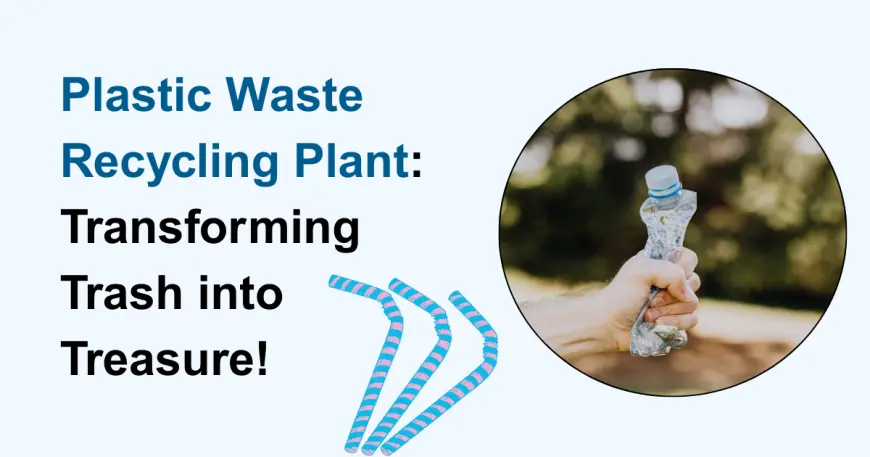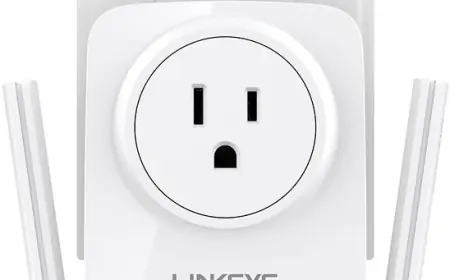Plastic Waste Recycling Plant: Transforming Trash into Treasure!
The growing concern of plastic pollution has led to an urgent need for sustainable waste management solutions.

Sustainable waste management solutions are urgently needed as a result of the growing concern over plastic contamination. In addition to generating economic prospects, a plastic waste recycling factory is essential for minimizing environmental harm.
Understanding Plastic Waste Recycling Plant Setup
Establishing a plastic waste recycling facility necessitates meticulous preparation and implementation. Several crucial steps are involved in the process:
-
Market Research and Feasibility Study – Examining your region's supply, demand, and commercial possibilities.
-
Choosing the Right Location – Ensuring that suppliers, transit hubs, and raw materials are all nearby.
-
Obtaining Licenses and Permits – Conformity with regional business and environmental laws.
-
-
Procuring Machinery and Equipment – Investing in shredders, washers, extruders, and other recycling machines.
-
Hiring Skilled Workforce – Recruiting experienced workers for operating machinery and managing processes.
-
Sorting and Processing – Efficiently segregating plastic waste and converting it into reusable materials.
Plastic Waste Recycling Plant Cost
The plastic waste recycling plant cost depends on various factors, including:
-
Scale of Operation – Small, medium, or large-scale plant setup.
-
Machinery and Equipment – Prices vary based on technology and processing capacity.
-
Infrastructure and Utilities – Land, electricity, and water supply expenses.
-
Labor and Operational Costs – Salaries, maintenance, and logistics.
-
Government Incentives and Subsidies – Some regions offer financial support for recycling initiatives.
On average, setting up a small-scale waste plastic recycling plant may cost anywhere between $50,000 to $200,000, while large-scale industrial plants can range from $500,000 to several million dollars.
Waste Plastic Recycling Plant: The Process
A plastic waste management and recycling plant operates through multiple stages to ensure effective recycling:
-
Collection – Gathering plastic waste from households, industries, and waste collection centers.
-
Sorting – Categorizing plastics based on their resin types (PET, HDPE, PVC, etc.).
-
Cleaning and Washing – Removing dirt, labels, and contaminants from plastic waste.
-
Shredding and Grinding – Cutting plastic into small flakes for further processing.
-
Melting and Extrusion – Converting plastic flakes into pellets for manufacturing new products.
-
Product Formation – Using recycled plastic pellets to produce new plastic items.
Benefits of a Plastic Waste Recycling Plant
-
Environmental Protection – Reduces plastic pollution and conserves natural resources.
-
Economic Growth – Enhances local economies and generates employment possibilities.
-
Energy Efficiency – Saves energy compared to producing virgin plastic.
-
Circular Economy Promotion – Encourages sustainable reuse of plastic materials.
Final Thoughts
A plastic waste recycling plant is a step toward a cleaner and greener future, not just a commercial venture. With the right strategy, funding, and technology, business owners may make a sizable profit in addition to helping manage and recycle plastic garbage. Establishing a waste plastic recycling facility is a worthwhile and significant endeavor as awareness of plastic pollution rises worldwide. We can guarantee a sustainable future for future generations by turning plastic waste into useful products.
Also Read:
What's Your Reaction?
 Like
0
Like
0
 Dislike
0
Dislike
0
 Love
0
Love
0
 Funny
0
Funny
0
 Angry
0
Angry
0
 Sad
0
Sad
0
 Wow
0
Wow
0




















































